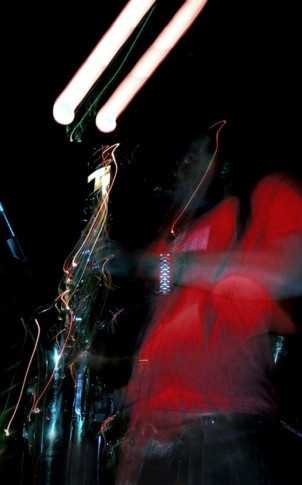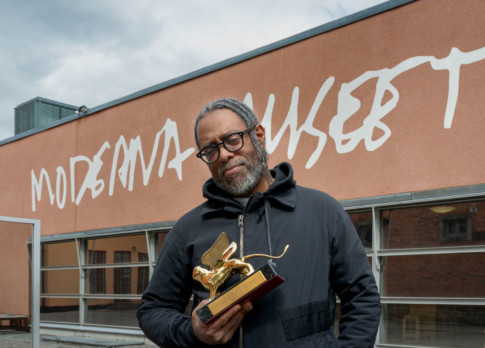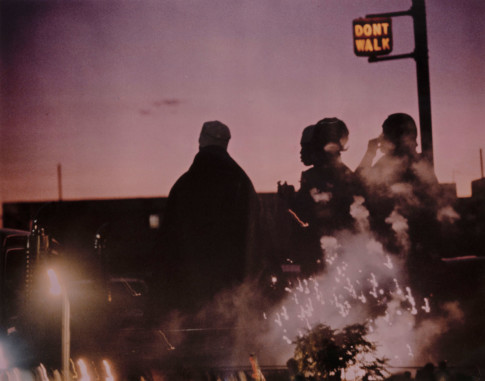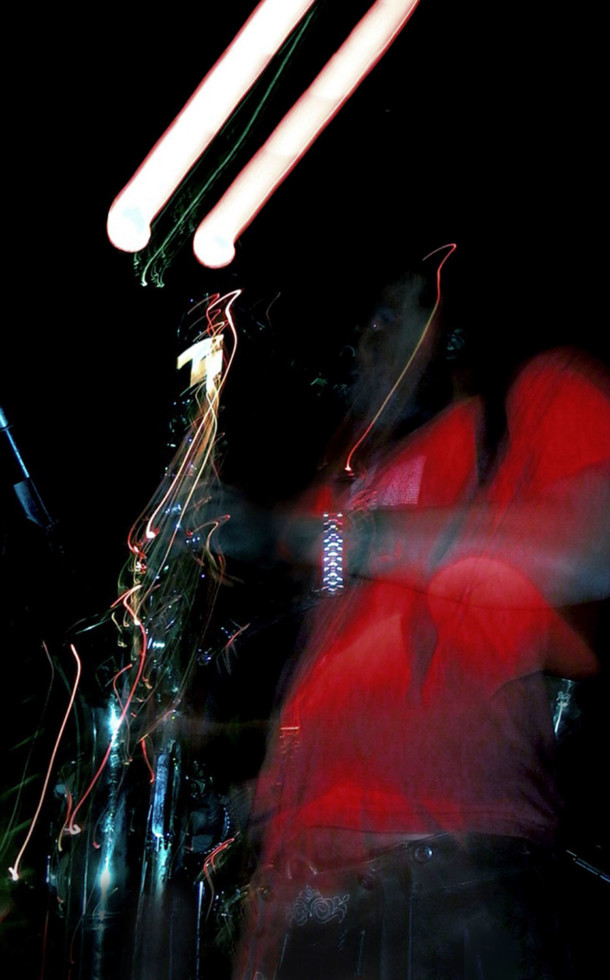
Arthur Jafa, Micah, 2017 Digital C-print © Arthur Jafa. Courtesy the artist and Gavin Brown’s enterprise, New York/Rome.
Introduction Arthur Jafa
For this exhibition Arthur Jafa has invited the photographer Ming Smith and the visual artist Frida Orupabo, and included material from Missylanyus’s Youtube channel, to build an experience in sound and image that is both politically reflective and visionary.
Jafa’s narratives go far back in American history, to the traces that the transatlantic slave trade left on its culture and people. He wants to bring out and free the power that is hidden in African-American aesthetics, through films, photographs, and found material. Based on his own in-depth knowledge and references to other artists, writers, and scholars, such as John Akomfrah, Toni Morrison and Fred Moten, Arthur Jafa makes new interpretations of today’s society.
Black Visual Intonation
Arthur Jafa has developed what he calls Black Visual Intonation (BVI). The idea is based on an analysis of music, a field in which there is a rich and complex tradition in Black culture and a lot of self-confidence. Jafa refers to the strength of a culture that people carry with them in mind and body. Music like jazz, art music, and world music often uses the positions between the notes, positions that vibrate or interfere with the accuracy of the notes. Jaffa argues that, similarly, a certain power is generated when sounds and images stand in a random rather than fixed relation to one another.
BVI is about finding a filmic practice where the montage isn’t just a stream of images but also creates a visual movement in synchrony with this vibrating tonality. Along with close friends and associates, Jafa works towards making Black cinema with the power, beauty, and alienation of Black music.
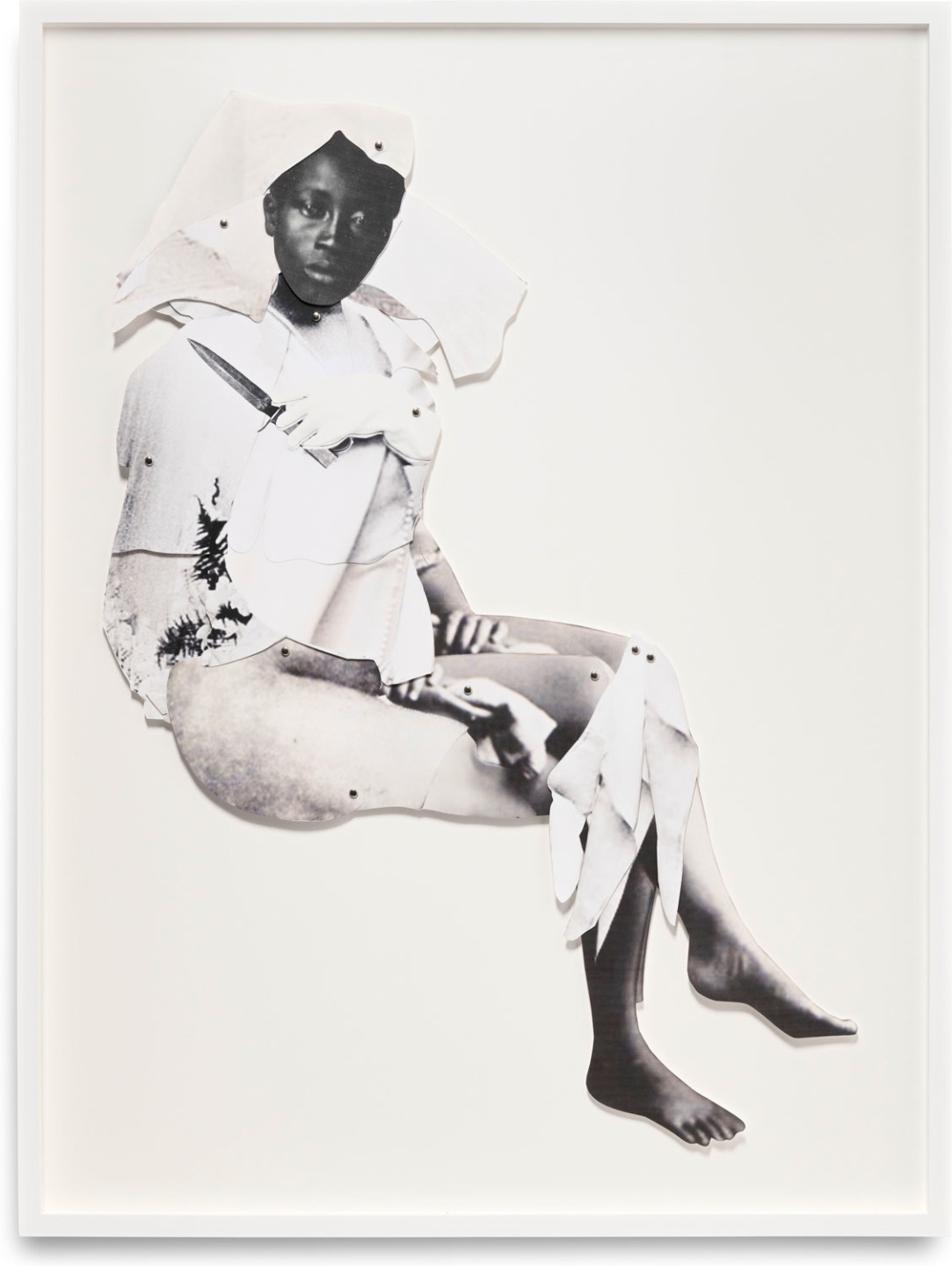
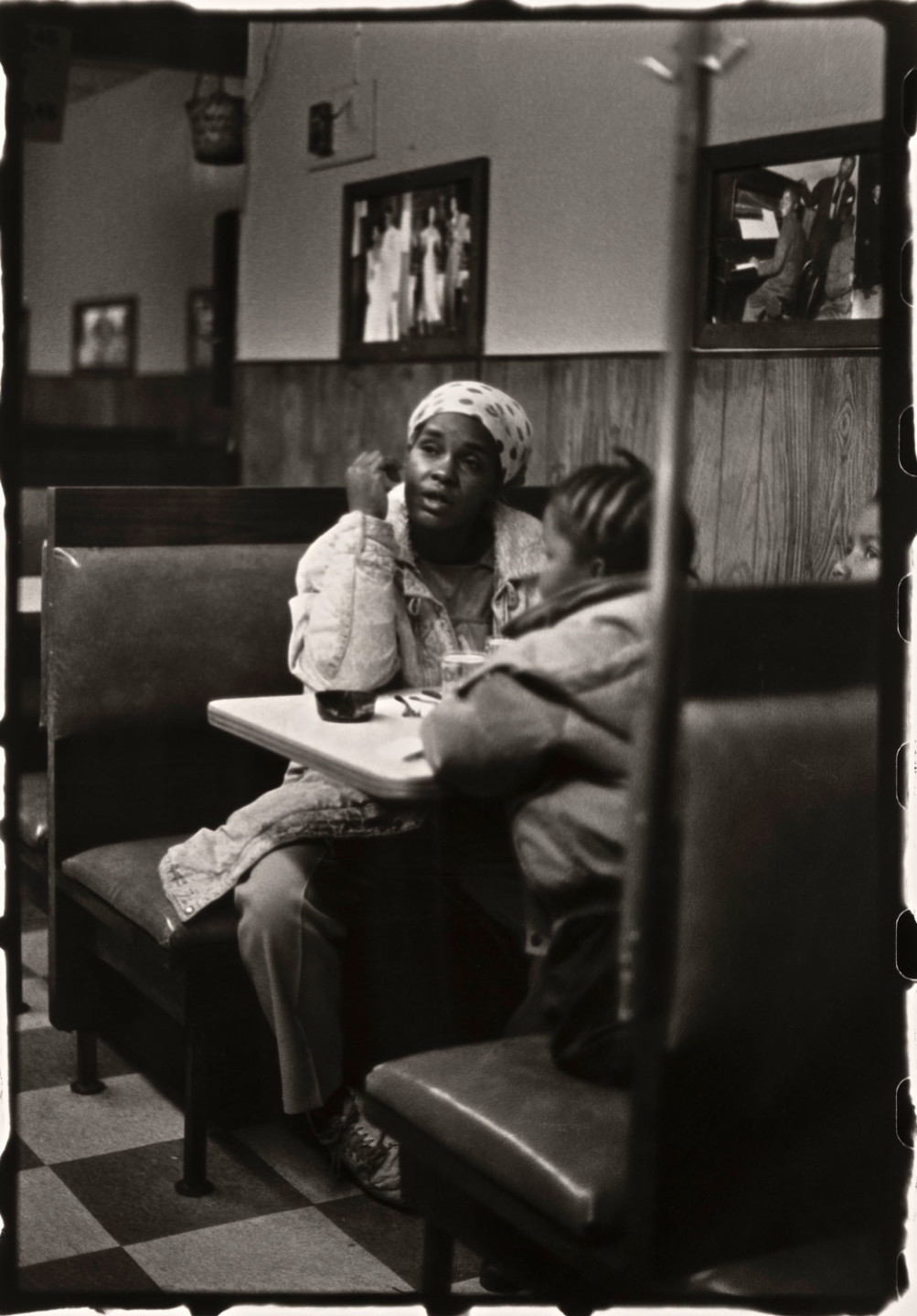
Jonathan
In Jonathan (2017) we see Jonathan P. Jackson during the well-documented events on 7 August 1970 in Marin County, San Raphael, California. Jackson invaded the court house to demand the release of a group who had become known as the Soledad Brothers, after the prison where they were being held. The group consisted of three inmates who stood accused of murdering a white prison warden as retaliation for a fight in which three Black inmates had been shot to death three days before. George Jackson, Jonathan’s brother, was one of the accused. He was an activist, Marxist, writer and member of the Black Panther Party.
During the liberation attempt Judge Harold Haley was kidnapped, which led to a shootout that left four dead, including Jonathan and the judge. Here Arthur Jafa has used an archival newspaper photograph from the Marin Independent Journal to create an enlarged and fragmented rendition of the chain of events. This work shows Jafa’s interest in investigating historical events, in which the African-American population has been subject to discrimination and false accusations.
The Flag
The flag of the Confederate States of America with thirteen stars, the so-called Confederate Flag, has long been perceived as a symbol of racial discrimination in the USA. It came into use during the American Civil War between the Northern and the Southern states from 1861 to 1865. Despite never being officially recognised as such, it became known as the insignia of the American South. To protest against the growing Civil Rights Movement in the USA in the 1950s and ’60s, the Ku Klux Klan adopted the flag as a symbol of white supremacy.
Arthur Jafa’s Black Flag (2017) is sewn out of black cloth, embedding the flag in Blackness, which it historically is a symbol against. In a similar way he created Black American Flag 1.0 (2017) where the classic banner of stars has been blackened and suspended behind the Confederate Flag.
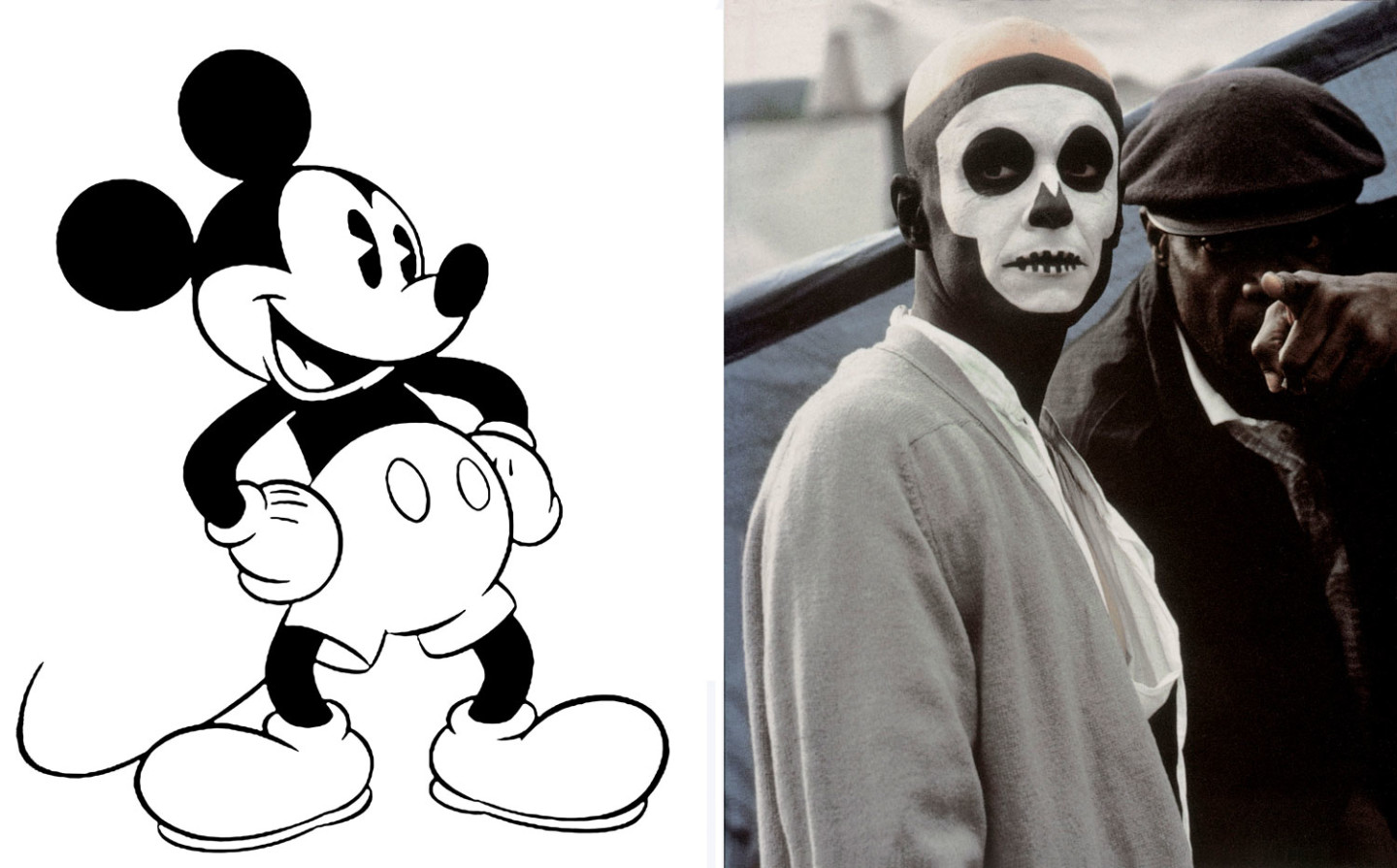
Pledge of Allegiance
The work Pledge of Allegiance, 1899 (2017) refers to the pledge to the American flag and the Republic of the USA that was written by the Baptist minister Francis Bellamy in 1892. The oath is usually delivered with one’s right hand on one’s heart. Jafa’s work is a photo wallpaper depicting a picture dated circa 1899–1900 from the Library of Congress in Washington depicting a group of African-American children at Whittier Primary School in Hampton, Virginia, saluting the flag with their arms raised and hands pointing towards the flag.
Its similarity to the Hitler salute meant that this gesture was no longer used after a decision in the US Supreme Court in 1942. The following year, it was also decided that forcing students to recite the Pledge of Allegiance is a violation against the First Amendment. Nevertheless, it is still recited in schools today. The issue came up as recently as February 2019 and became a news item when an African-American sixth-grade student in Florida refused to recite the oath arguing that it symbolised the oppression of Blacks in the US.
Rwanda
This photograph was taken by Arthur Jafa at the Murambi Memorial Site in Rwanda in 1999. During the civil war in Rwanda (1990–94) the Hutu government murdered between 800,000 and 1 million Tutsis and Hutus who allegedly were on the Tutsi side. The genocide occurred concentrated in different places in Rwanda, one of them being Murambi, where Tutsis tried to find refuge in a church. They were lured by the bishop and the local mayor to instead take shelter in a technical school that was being built. More than 50,000 people fled there but instead of being saved they were locked in to minimise resistance. They were killed by the Hutu forces and their bodies were thrown in a mass grave on which a volleyball field was later erected to hide evidence of the massacre.
The Murambi Memorial Site opened in 1995 and the school building is now a genocide museum where one can see mummified bodies and discarded clothes. The work reflects Jafa’s studies of artefacts and other remnants of Black history and how these objects and images gain further meaning by being lifted out and presented in new contexts.

Portraits
Several works focus on Arthur Jafa’s interest in different forms of portraiture and in how the white gaze dominates the production of photography and film. Jafa claims that it doesn’t matter whether or not a Black person is behind the camera, since the camera itself functions as an instrument of the white gaze. The term was originally formulated by the theoretician Frantz Fanon in the early 1950s. When light skin is seen as the norm it creates a view of people with darker skin tones as “the Other”, meaning foreign and different. The exhibition includes several portraits of both well-known and unknown people, as well as self-portraits for some of which Jafa has used Facetime.
Hortense Spillers (born 1942) is an American literary critic, expert in African-American feminism and professor at Vanderbilt University. Spillers is best known for Mama’s Baby, Papa’s Maybe: An American Grammar Book (1987), one of the most cited essays in African-American literature. It is a text about gender construction in which Spillers explores how the matriarchal structure forced on families during the time of slavery manifests itself in families today.
Harriet Tubman (circa 1820–1913), also known as Moses, was a freedom fighter and anti-slavery activist. She fled a life of slavery in Maryland in 1849 and joined the abolitionists in Philadelphia. Harriet Tubman succeeded in freeing hundreds of slaves through the so-called Underground Railroad. This was the code name of the organised escape route for slaves, which connected the northernmost states of the South like Kentucky with free states in the North, between 1850 och 1860. Some 100,000 escaped to freedom thanks to volunteers who risked their lives, including Harriet Tubman. In 2016 the US Treasury proposed that Harriet Tubman would grace the front of a twenty-dollar bill from 2020 onwards.
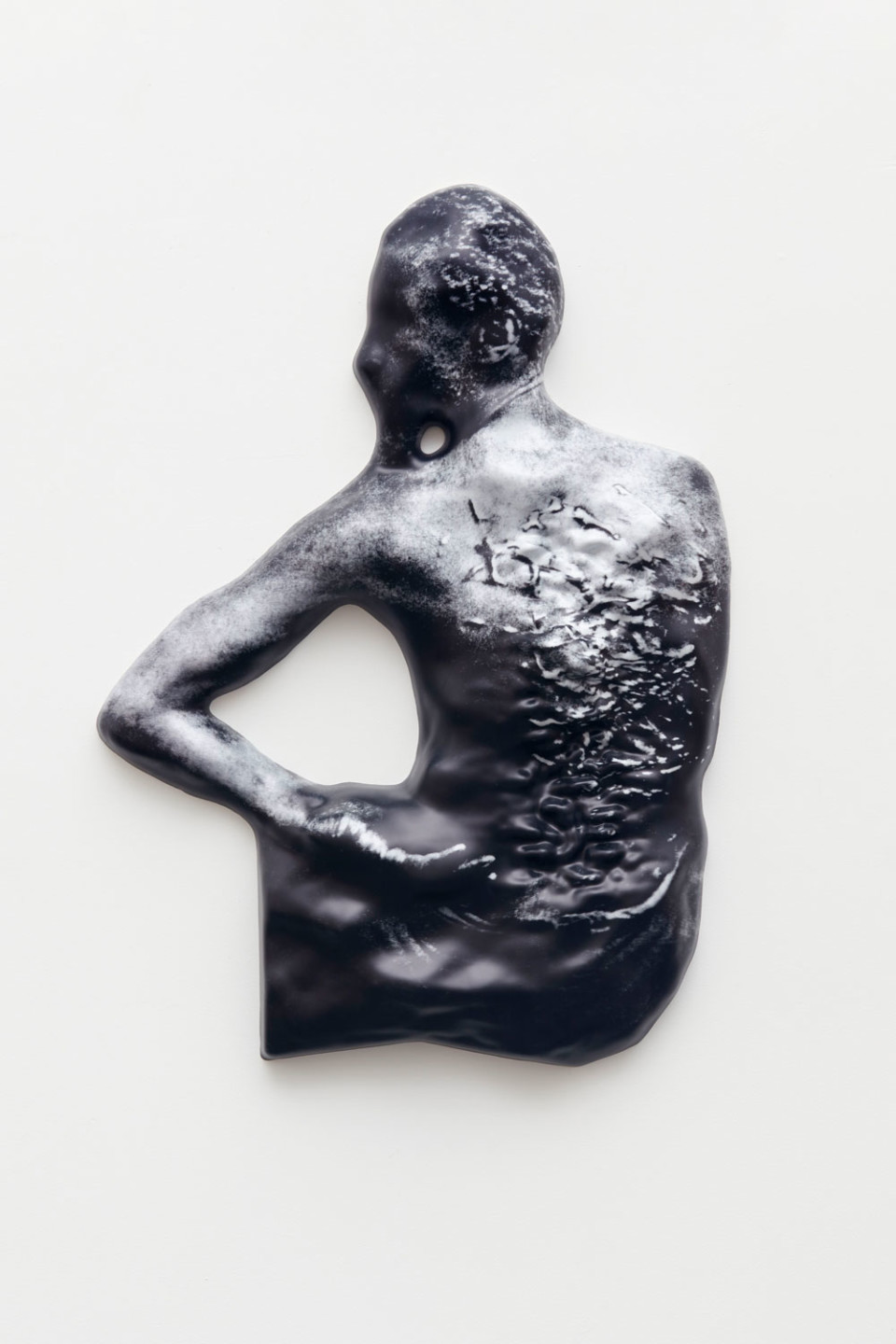
Ex-slave Gordon
Ex-slave Gordon (died 20 July 1907, birth date unknown, Gordon possibly a surname), aka Whipped Peter, was a slave who fled from the plantations of Louisiana in March 1863. He walked 64 km in ten days, barefoot, until he reached the encampment of the Union army near Baton Rouge where he was granted refuge. This was during the American Civil War (1861–65) when the Union fought for the reunification of North and South as one nation, free from slavery.
Gordon and many other former slaves later became soldiers in the Civil War in USA’s so-called Colored Troops. A photograph showing Gordon’s back, which was severely scarred from whipping, was widely disseminated and even published in the popular magazine Harper’s Weekly the year of his escape. The atrocities of slavery became more obvious to the general population which strengthened the opposition to slavery both in North America and internationally. The exhibition shows a relief based on this image.
APEX
In the work APEX (2013), 841 images are fed through in 492 seconds. The projected images are accompanied by a hypnotic techno-like background noise and we are drawn into Arthur Jafa’s explosive and raw world of images. It is a world in black-and-white, a world of Blacks and Whites, with a few pictures in blue, yellow and blood red. Brutal, unnatural deaths through mutilation, being stoned or burnt to death can be seen in the stream of images. The bloody figure of Christ on the cross with his crown of thorns is also included, as well as a great number of weapons. We encounter actors such as Nicole Kidman as Virginia Woolf, minstrel singers with “black face”, famous people like the Dalai Lama and Michael Jackson. Mickey Mouse, the Disney character of the black mouse with a white mask, flashes by. King Kong and Alien make an appearance, as well as monsters and mutants, sacred objects, African masks, angels and machines. Arthur Jafa has meticulously assembled images into staggering constellations in this audio-visual collage. It encompasses everything from gigantic sea monsters to enlarged microorganisms, creating a thought-provoking whole.

